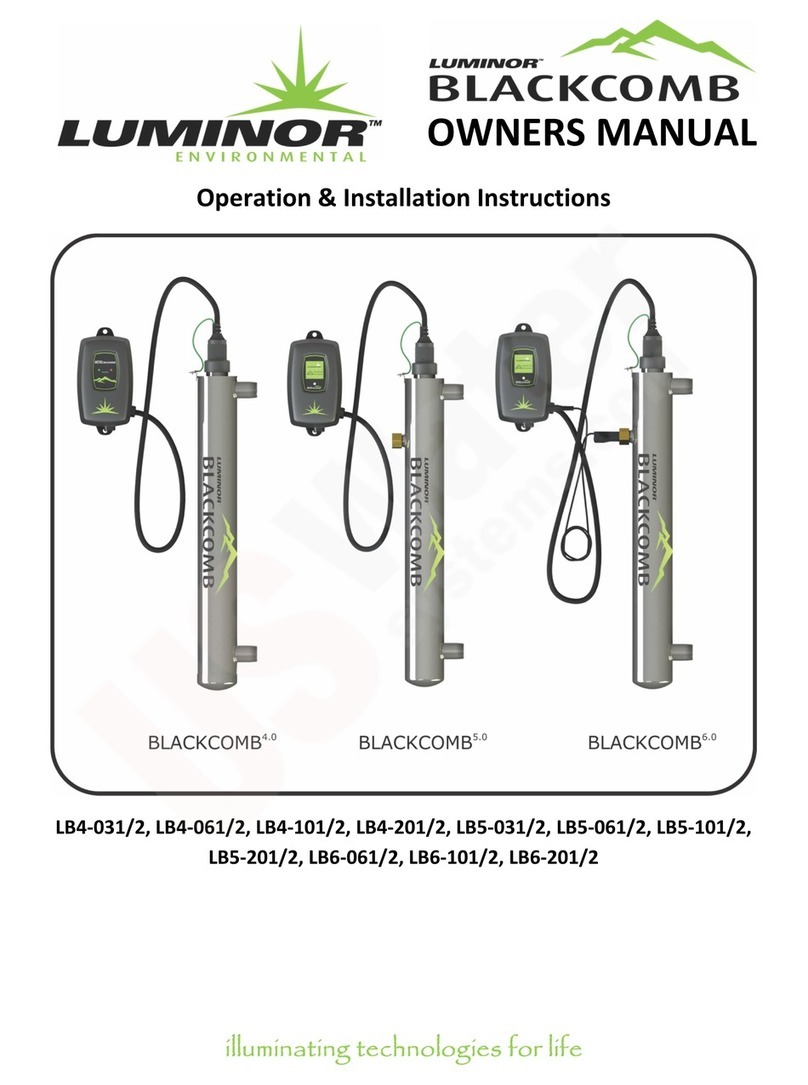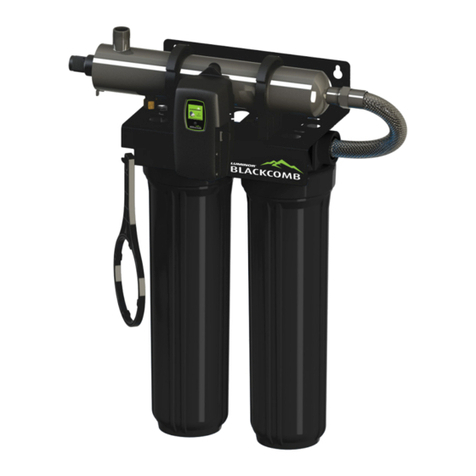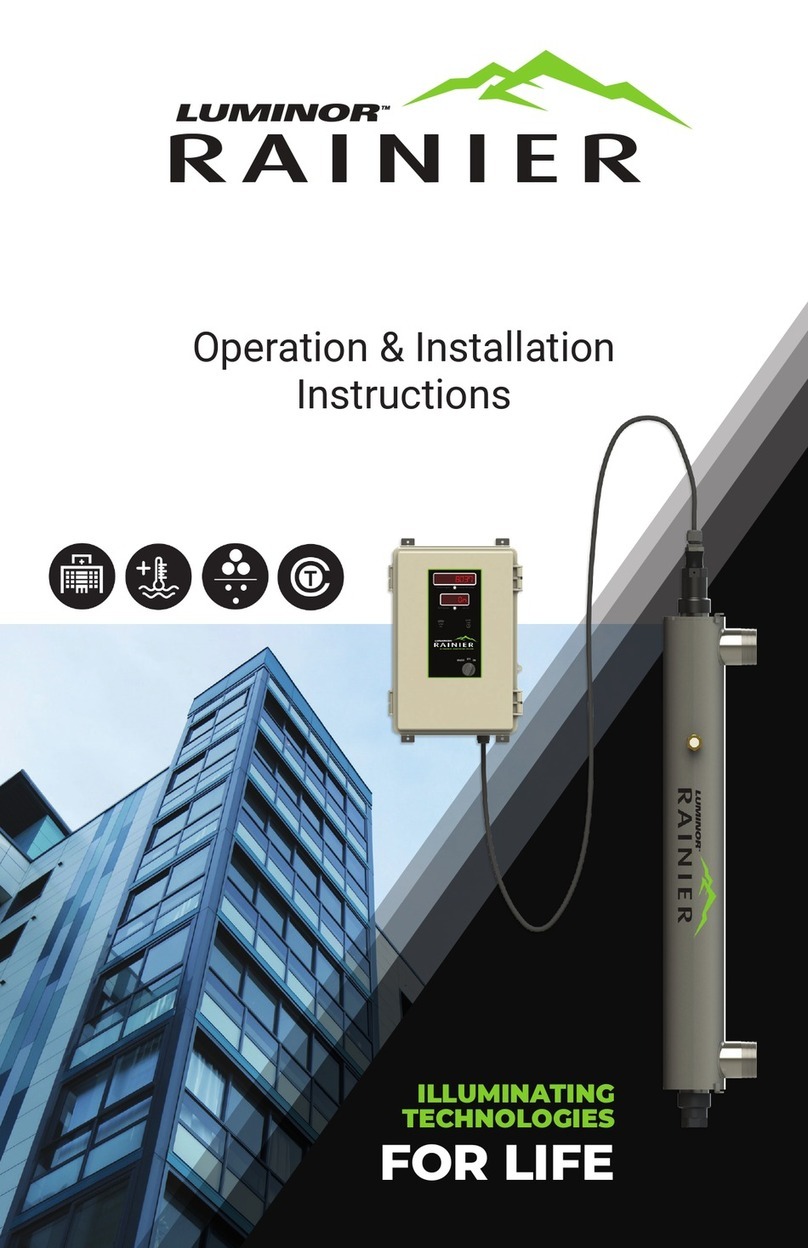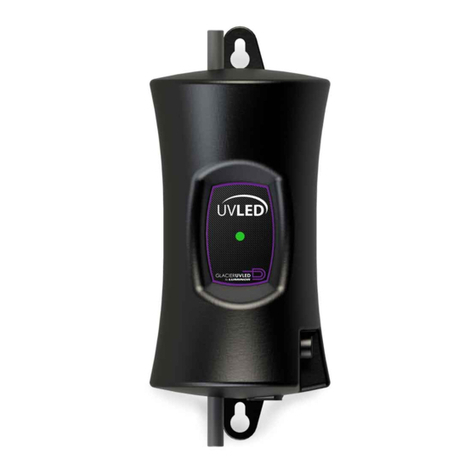
7
Step 4: If you do not know the ow rate of the water supply in the application, it is
recommended that you use a ow restrictor so that the rated ow of your particular
EVEREST system is not exceeded, and the UV dose is not compromised. The ow
restrictor should be installed on the outlet port of the reactor.
Step 5: The system is shipped with the quartz sleeves installed in the chamber and
has been pressure tested at the factory to 150 PSI. PLEASE NOTE: Do not install a UV
lamp inside the quartz sleeve without the sleeve springs in place.
Step 6: (Applicable only if you have a UV sensor).
Carefully remove the sensor from its packaging and
insert the sensor into the UV sensor port (Figure
6). There are two sensor ports on the chamber. It
is recommended to install on the bottom port if the
chamber is installed horizontally to avoid air bubbles
in front of the sensor. The sensor can only go in one
way. Ensure that the at potion of the UV sensor
matches up with the half metal lip on the sensor
port (at portion should face the lamp connection end) (see Figure 6) Ensure that the
sensor is fully seated in the sensor port and then tighten (turning clockwise) the sensor
nut. PLEASE NOTE: DO NOT over tighten the nut as this could damage the Teon
sensor body. Plug the male connector into the sensor port located on the bottom of the
control panel.
Step 7: The reactor is now ready for water ow. WARNING: Sudden lling of an empty
reactor could potentially break the protective quartz sleeves. It is strongly
recommended to gradually ll the empty reactor. Damage because of sudden lling is
not covered under warranty. When all plumbing connections have been completed you
should check for any possible leaks. Slowly turn on the water supply and check for
leaks. Make sure the by-pass valves are functioning properly and that the water is
owing through the reactor. The most common leak is from the O-rings (Figure 7) not
making a proper seal on the reactor. If this is the case turn the water off, drain the
reactor, remove each O-ring, dry them and reapply silicon grease. Replace each O-ring
ensuring they are properly sealed against the reactor, retighten the gland nuts and
check again for leaks. WATER-HAMMER WARNING: Quartz
sleeves can break inside the reactor if water-hammer occurs.
Water hammer is caused by sudden closing of valves elsewhere
in the piping system. It is strongly recommended to ensure that
the piping and valve system is designed to prevent water-
hammer. Damage due to water-hammer is not covered by
warranty.
Step 8: The control panel can now be mounted on the wall. Is should always be above
or beside the reactor to ensure that no moisture can deposit on any of the connections.
The control panel can be mounted up to 8 feet away from the reactor. The control panel
requires a single phase, 208-240VAC 50/60Hz connection and should be hardwired in
accordance with local electrical code.
Step 9: Now you can remove the UV lamp from its packaging being careful not to touch
the lamp quartz with your hands. Again, the use of cotton gloves is recommended to
avoid depositing oils on the lamp glass. Always hold the lamp by the ceramic ends.
Carefully insert the UV lamp into the reactor sliding it inside the quartz sleeve located
inside the reactor. (Do not drop the lamp into the reactor).
Figure 7: O-ring in-
stallation on sleeve
Figure 6: LE6 Sensor installation
(left), LE5 Glow Plug installation
(right)
































